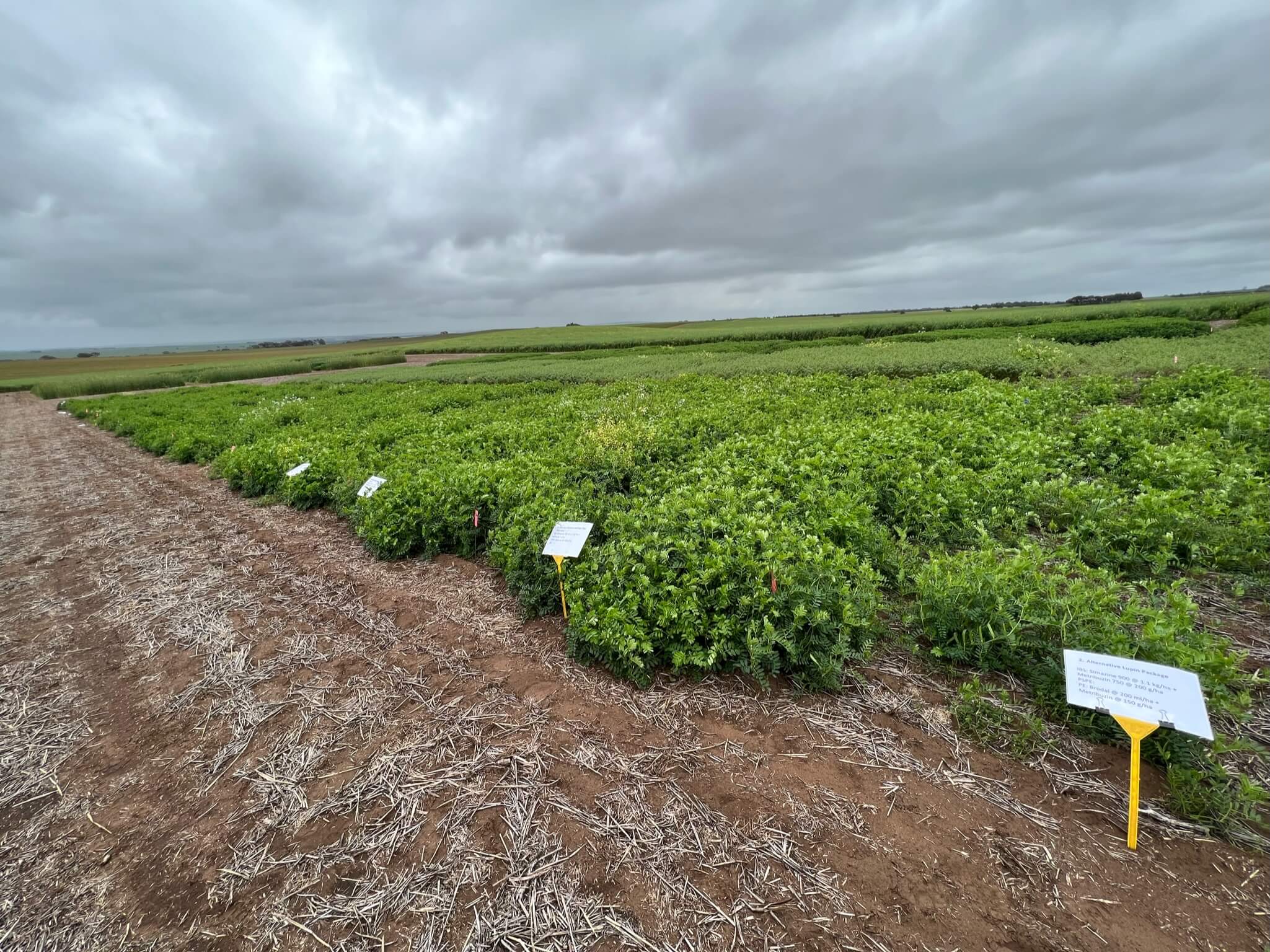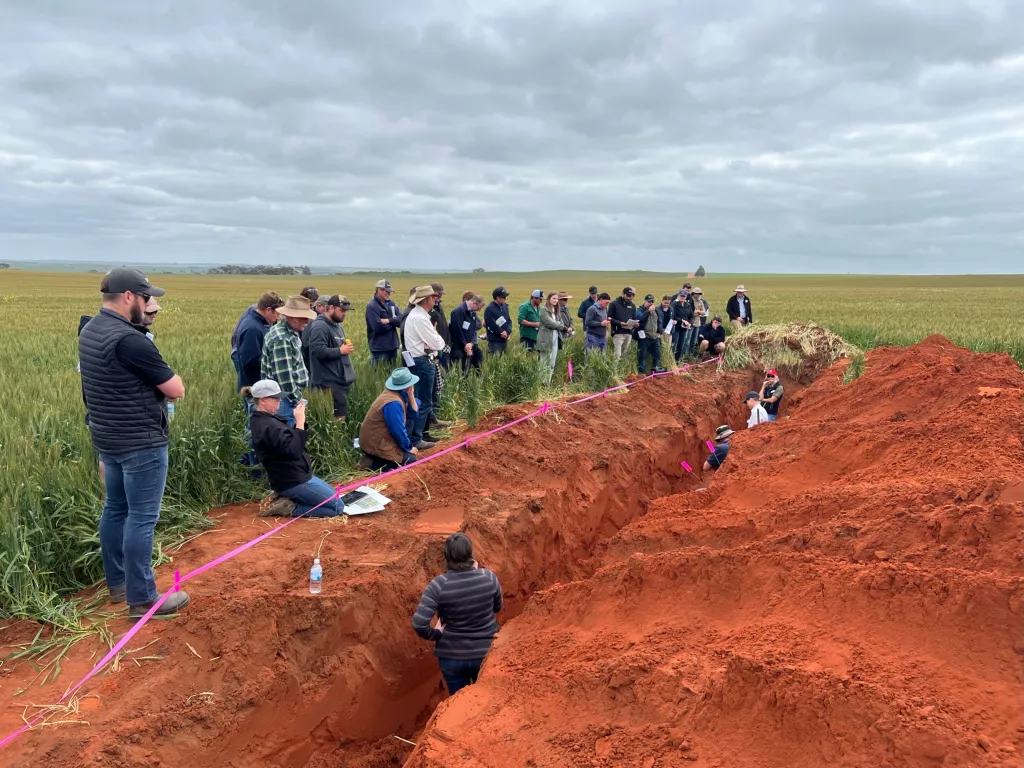Early Post-Emergent Deep Ripping Insights from Bidgerabbie K Extension Trial Site
By Simon Kruger, WMG Project Communications Officer
On 16th July 2024, the West Midlands Group (WMG) hosted a pop-up crop walk at the K Extension Project Bidgerabbie trial site. While the site is focused on the ability of various crop types to recycle K up from deeper layers in the soil and make this available for future crops, trial host Lachie Brown was able to deep rip half of the site post seeding, pre-emergent to explore the impact of this practice.

The K site is currently investigating the ability of different crops to cycle potassium (K) up from depth. The study compares five different crops under two conditions: an unripped control and a post-seeding ripped treatment. The site was ripped perpendicular to the direction of sowing with a Nufab deep ripper and crumble roller to a depth of 550mm, three days post-seeding.
Initial predictions suggested that lupin would be the least affected by the ripping process, followed by wheat and canola, due to the size of the seeds. However, the results showed that canola was the least affected, followed by lupin, wheat, and finally serradella.

The attendees, all with some experience with deep ripping, shared their insights. Most perform deep ripping pre-seeding, in the Autumn window, which can be challenging in a dry season like 2023/24. They typically rip before cereals every second or fourth year, testing soil strength manually with a shovel or stick, as none have a penetrometer available. Many agreed that a depth of 500mm was generally the target, however there was some discussion of going deeper. However, there was a general reluctance among the group to deep rip post-seeding, with there being too many ‘unknowns’.


Group Questions
As is often with these farmer discussion events, the group raised several questions for further investigation:
- What are the realistic timing options for choosing post-seeding ripping due to lack of moisture?
- Is post-em ripping as a tactic to move seeds through the profile?
- Is there a lack of first-year benefit for post-seeding ripping?
- What are the implications for herbicides?
- Do different rippers affect the crops differently and are certain machines more or less suitable for this practice?
- What would be the results from different seeding rates and the how would this affect the relationship between ripping and yield?

Key Takeaways
- The goal is to rip when it’s wet, however, there can be more than one timing in the season this could occur.
- Focus on strategic ripping – thinking of appropriate machinery, timing and conditions for crop type – with early post-emergent ripping being a possible ‘tool in the toolbox’.
- The group expected the results to look worse than they did, but consensus was aside from the serradella, crops seemed to have established quite well.
In conclusion, the crop walk was a successful pop-up event, providing a valuable opportunity to listen to different perspectives and variables going into the decision-making process around deep ripping, both post and pre-emergent.














